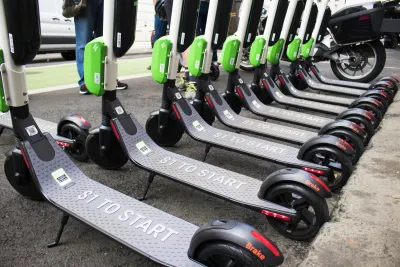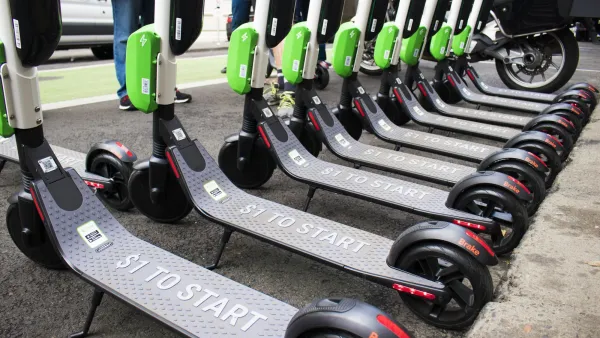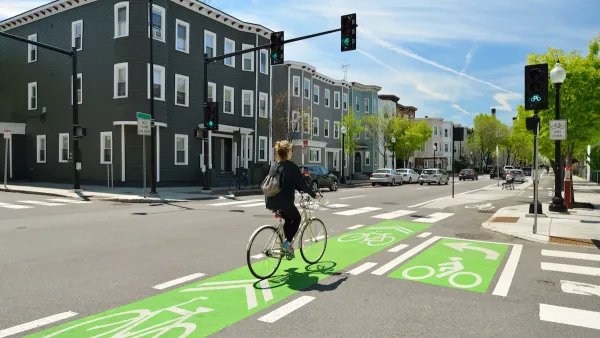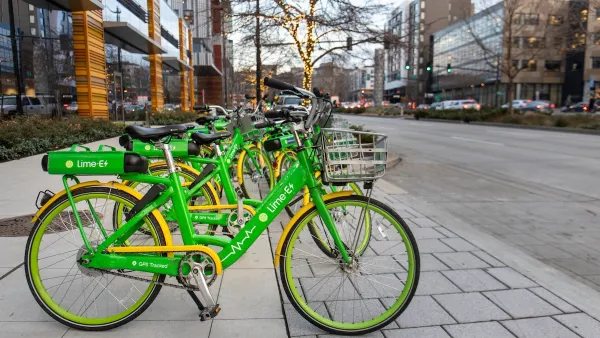Pilot programs can offer useful insight to decisionmakers, but they need to be done for the right reasons and with clear goals and plans.

Kristin Musulin reports on a recent policy brief about developing and executing mobility pilot programs as local governments look new technologies such as autonomous shuttles, dockless scooters, and ride sharing services.
Musulin talked to David Zipper, the author of the brief, about how pilot programs can be designed to best help officials and policymakers assessing the landscape of emerging mobility options.
Zipper says local governments need to identify clear goals for the projects, foster transparency that then builds credibility, and accept the outcomes. "If the hypothesis is not confirmed — if microtransit doesn't save money, or if scooters don't reduce car trips — I think it's terrific if the city can come out and say look, we ran the pilot, we collected the data, our hypothesis didn’t work out the way we thought. So now we’re going to make the appropriate decision."
Local governments also need to collect the right data and have the capacity to analyze it within their organizations or through partnerships, says Zipper. Pilot programs done for the right reasons can be extremely beneficial for a city as well as other cities considering similar programs and technologies.
"I would suggest that many times, the reasons that pilots happen have to do with what I would call FOMO [fear of missing out]. You have a city leader who wants to throw a technology on the street before peers do. I think it's a really bad habit and it can lead to wasted resources, dashed expectations and, in an absolutely worse case scenario, really unsafe technologies on the streets that can cause real damage," says Zipper.
FULL STORY: An urbanist's guide to creating effective mobility pilots

Analysis: Cybertruck Fatality Rate Far Exceeds That of Ford Pinto
The Tesla Cybertruck was recalled seven times last year.

National Parks Layoffs Will Cause Communities to Lose Billions
Thousands of essential park workers were laid off this week, just before the busy spring break season.

Retro-silient?: America’s First “Eco-burb,” The Woodlands Turns 50
A master-planned community north of Houston offers lessons on green infrastructure and resilient design, but falls short of its founder’s lofty affordability and walkability goals.

Test News Post 1
This is a summary

Analysis: Cybertruck Fatality Rate Far Exceeds That of Ford Pinto
The Tesla Cybertruck was recalled seven times last year.

Test News Headline 46
Test for the image on the front page.
Urban Design for Planners 1: Software Tools
This six-course series explores essential urban design concepts using open source software and equips planners with the tools they need to participate fully in the urban design process.
Planning for Universal Design
Learn the tools for implementing Universal Design in planning regulations.
EMC Planning Group, Inc.
Planetizen
Planetizen
Mpact (formerly Rail~Volution)
Great Falls Development Authority, Inc.
HUDs Office of Policy Development and Research
NYU Wagner Graduate School of Public Service




























